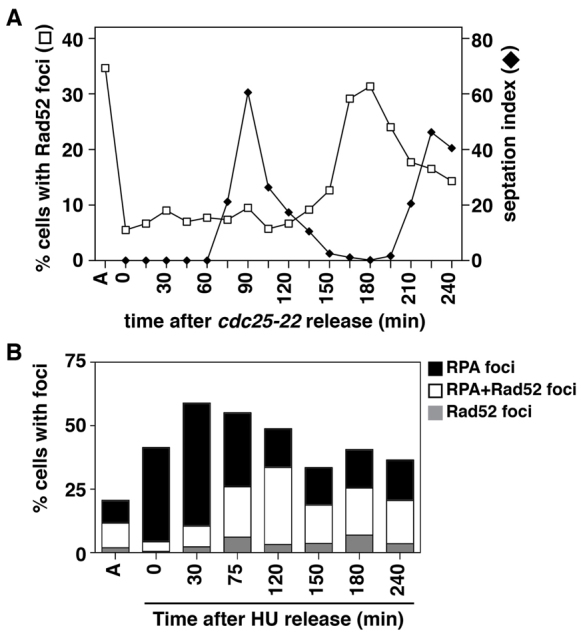Fig. 5.

Rad52–RPA foci form without exogenous replication stress. (A) Asynchronous cultures of brc1Δ cells carrying the temperature sensitive cdc25-22 allele and expressing Rad52–YFP were grown to exponential phase at 25°C, and then shifted to 36°C for 4.5 hours to arrest cells late in G2 phase. Cultures were then shifted to 25°C (time 0), and samples taken every 15 minutes to determine the percentage of cells with YFP foci and possessing division septa. Note that the foci present in asynchronously growing brc1Δ cells are resolved during the imposed cell cycle arrest, but reappear upon completion of septation, coincident with completion of S phase. Data are means ± s.d. for three populations of 100 cells. (B) Both Rad52 (Rad22–RFP) and RPA (Rad11–GFP) expressed in the same cells were simultaneously localized in asynchronous brc1Δ cells (as in A) and following a timecourse of release from an arrest in 11 mM HU. Note, the RFP-tagged Rad22 is much dimmer than the YFP-tagged protein used in previous experiments (Coulon et al., 2004), leading to a reduced number of cells with visible Rad52 foci. Nevertheless, the majority of Rad52-positive cells are also positive for colocalizing RPA foci. Data are the means of three populations of 100 cells.
